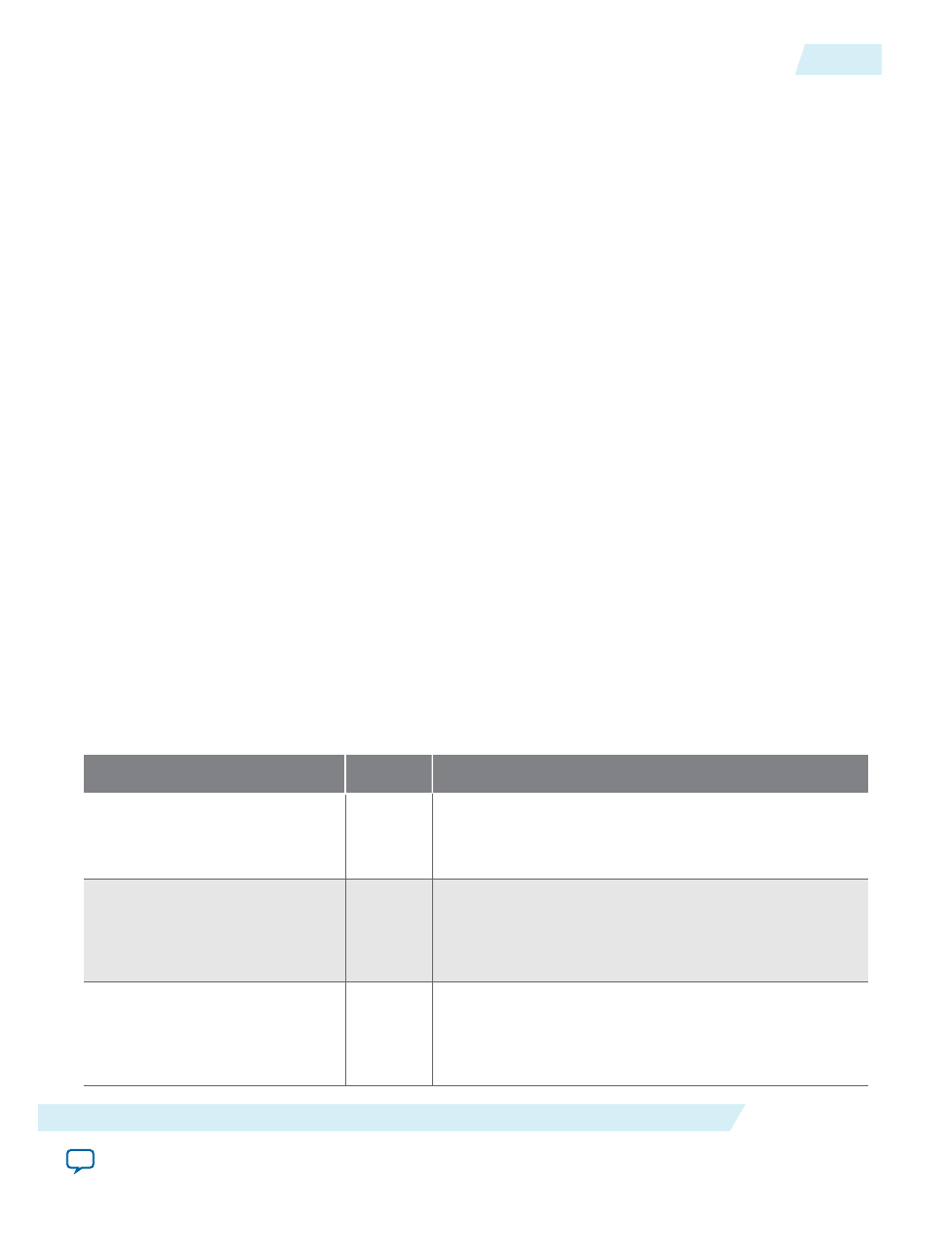Direct l1 control and status interface, Direct l1 control and status interface -29 – Altera CPRI v6.0 MegaCore Function User Manual
Page 59

Direct L1 Control and Status Interface
If you turn on Enable Z.130.0 access interface in the CPRI v6.0 parameter editor, the direct L1 control
and status interface is available. This interface provides direct access to the Z.130.0 alarm and reset signals
(loss of frame (LOF), loss of signal (LOS), service access point (SAP) defect indication (SDI), remote
alarm indication (RAI). and reset request or acknowledge) in the CPRI hyperframe.
If you connect the AUX interface of your RE slave IP core to a network switch or other routing layer
rather than directly to the downstream RE master, or if you do not fully connect the AUX interface to the
downstream RE master, you can use this Z.130.0 access interface to streamline the transfer of reset
requests and SDI alarms across hops.
This interface has higher transmit priority than access through the CPRI v6.0 IP core registers.
This interface has the following types of signals:
•
_local_
signals are output signals from the IP core about the state of this IP core, and also indicate the
IP core will assert the relevant outgoing Z.130.0 bit in the next CPRI hyperframe according to the
transmit priority of this interface.
•
_assert
signals are input signals the application can use to request that the IP core assert the relevant
outgoing Z.130.0 bit in the next CPRI hyperframe according to the transmit priority of this interface.
You can also connect these signals in an RE master to the corresponding
_req
output signals of the
upstream RE slave in a multi-hop configuration, to support efficient transfer of reset requests and SDI
alarms to the IP core.
•
_remote
signals are output signals from the IP core that indicate the IP core received a Z.130.0 byte on
the CPRI link with the relevant bit asserted by the CPRI link partner.
•
_req
signals are also output signals from the IP core that indicate the IP core received a Z.130.0 byte
on the CPRI link with the relevant bit asserted by the CPRI link partner. However, these signals are
intended to be passed downstream in a multi-hop configuration. If the IP core is an RE slave, and it
connects to an RE master through the Z.130.0 alarm and reset interface in a multi-hop configuration,
you can connect the RE slave IP core
_req
output signal directly to the corresponding
_assert
input
signal on the downstream RE master for efficient communication of the reset request or SDI alarm.
Table 3-10: Direct L1 Control and Status Interface Signals
All interface signals are clocked by the
cpri_clkout
clock.
Signal Name
Direction
Description
z130_local_lof
Output
Indicates the IP core has detected a local loss of frame. In
this case, the
state_l1_synch
output signal indicates the
L1 synchronization state machine is in state XACQ1 or
XACQ2
z130_local_los
Output
Indicates the IP core has detected a local loss of signal. The
IP core asserts this flag if it detects excessive 8B/10B errors
that trigger the assertion of the optional L1 debug
rx_lcv
output signal or the
xcvr_los
output signal and the
rx_
los
field of the
L1_CONFIG
register.
z130_sdi_assert
Input
Indicates that the master service access point (SAP) is not
available. Possible causes for this situation are equipment
error or that the connected slave IP core is forwarding an
SDI request it detected to the current RE CPRI master IP
core through a direct connection.
UG-01156
2014.08.18
Direct L1 Control and Status Interface
3-29
Functional Description
Altera Corporation
